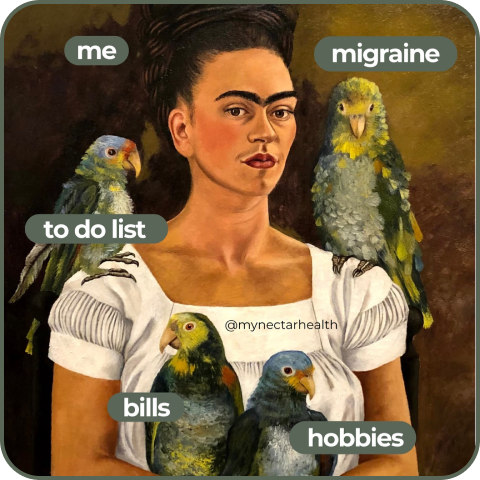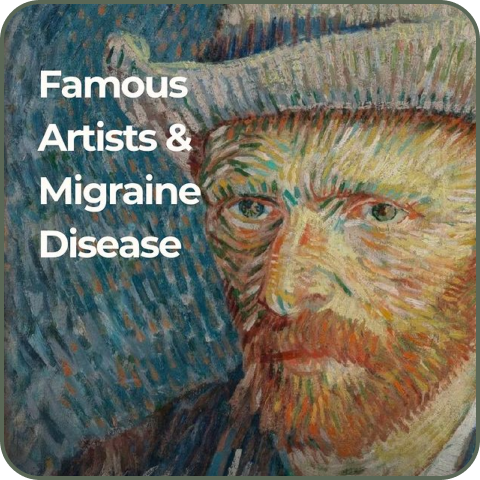If you’ve ever ended up in the ER for a migraine, you’re definitely not alone. Over 1.2 million people visit the ER every year for migraine attacks, and migraines are one of the top reasons for neurological ER visits. But while you might hope for fast relief, the reality of an ER visit for migraine often feels far from ideal.
In this post, we’ll explore why so many migraine sufferers end up in the ER, what ER treatments actually help (and what can make things worse), and how you can learn to abort migraine attacks naturally—and avoid repeated ER visits.
Why So Many Migraine Sufferers End Up in the ER
Migraines are a leading cause of headache-related ER visits. In fact, studies suggest migraines account for around 1–2% of all ER admissions. People with chronic migraines (more than 15 migraine days a month) are 2–4 times more likely to seek ER care than those with episodic migraines.
One big reason: status migrainosus—a migraine attack that lasts over 72 hours. These prolonged attacks often become so severe that emergency care feels like the only option.
But here’s the kicker: up to 70% of migraine patients report dissatisfaction with their ER care, citing poor pain relief and a lack of follow-up support. Let’s look deeper into what to expect at the ER—and what you need to know.
What to Expect at the ER for a Migraine
If you’re heading to the ER during a brutal migraine, you likely expect immediate relief. However, the standard ER migraine protocol usually follows these steps:
- Triage: A nurse assesses your symptoms and pain level.
- Neurological Exam: Doctors check for signs of serious conditions (like stroke or meningitis). This often involves CT scans or MRIs, which, while important, can be exhausting during a migraine.
- Medication: You may be given IV fluids, anti-nausea medications, pain relievers, or migraine-specific drugs.
- Observation: Staff monitor your response to treatment.
- Discharge: If no complications arise, you’re often sent home with a basic migraine diagnosis.
While this sounds logical, many migraine sufferers find the experience anything but healing. Here’s why.
The ER Environment: What Can Make Your Migraine Worse
The ER is a place designed for emergencies—not for the sensitive needs of migraine patients. Several factors in the ER environment can actually worsen a migraine:
- Bright Overhead Lights: Harsh fluorescent lighting intensifies light sensitivity and migraine pain.
- Loud Noises: Beeping machines, alarms, and conversations create overwhelming noise.
- High-Stress Atmosphere: Stressful surroundings spike cortisol levels, worsening symptoms.
- Lack of Migraine-Specific Treatment: Only about 37% of ER providers follow national migraine guidelines, often relying on outdated methods like opioids.
- Bias and Stigma: Migraine patients, especially women, are sometimes dismissed as “overreacting” or “drug-seeking.”
- Poor Preventive Care: Less than 20% of patients are given preventive care referrals after an ER visit.
- Undertrained Staff: Emergency doctors typically receive very little headache-specific training during medical school.
- Exposure to Germs: Sitting in a crowded waiting room can lead to infections that trigger or worsen migraine symptoms.
Many migraine patients describe the ER not as a place of healing—but as a chaotic, overstimulating, and deeply stressful experience.
When the ER Is Necessary—and When It’s Not
Despite its flaws, there are valid reasons to seek emergency care:
When the ER Helps:
- Ruling Out Dangerous Conditions: Stroke, meningitis, and brain aneurysms can mimic migraines. ERs can help rule them out.
- Short-Term Pain Relief: In extreme cases, ER doctors can help break the migraine cycle with strong medication.
When It Falls Short:
- Temporary Relief Only: Strong painkillers like opioids may offer quick relief but can lead to medication overuse headaches.
- No Long-Term Strategy: ERs rarely address underlying migraine causes, leading many patients to return within months.
- Dependency Risk: Overuse of ER medications can worsen migraine patterns over time.
Relying on the ER should be a last resort, not your main migraine strategy.
How to Advocate for Yourself in the ER
If you do need to visit the ER for a migraine, here are five ways to protect yourself and get better care:
- Bring an ER Migraine Action Plan: Write down your history, what treatments have worked, and share it with ER staff or a loved one.
- Be Clear and Assertive: Let providers know you have chronic migraines and what has worked previously.
- Ask for a Proper Diagnosis: Ensure your migraine diagnosis is clear to rule out other conditions.
- Say No to Unnecessary Opioids: Request migraine-specific treatments instead.
- Demand a Specialist Referral: Before discharge, ask for a follow-up with a neurologist or headache specialist.
Preparation can make a massive difference in how you’re treated.
The Best Long-Term Strategy: Learning to Abort Migraines Naturally
The most empowering solution? Learning to stop migraines naturally before they spiral out of control.
That’s why we created the Migraine Now button in the Migraine Heroes App. Our approach teaches you how to intervene early in an attack using proven, non-medication-based strategies—often stopping the migraine before it becomes unmanageable.
One user called it “the best use of AI I’ve seen”—and for good reason. Through natural methods, personalized for each person, we’ve helped thousands reduce their ER visits and take back control of their lives.
It’s not magic—it’s a skill. And you can learn it too.
Conclusion: You Deserve Better Migraine Care
ER visits for migraines can sometimes be necessary—but they often offer only temporary relief without addressing the root causes of migraine attacks. The bright lights, noise, and stress of the ER environment can even make migraines worse for many sufferers.
Learning to recognize when the ER is appropriate—and when natural, early intervention is a better path—is crucial. You matter, your dreams matter, and with the right strategies, you can break free from the cycle of ER visits and take back control of your health.
Join the Migraine Heroes Community
💡 New podcast episodes drop every Monday and Wednesday! If you’re a migraine warrior, you’re in the right place.
📲 Download the Migraine Heroes App—the only service worldwide that teaches you how to prevent and stop migraines by adding selective foods to your diet. Start tracking and finally take control of your health!
🔗 www.migraineheroes.com
Disclaimer: This blog is for informational purposes only and does not substitute for providing medical advice. Always consult your healthcare professional before making any health-related decisions.
For women, men, and children who suffer from migraine disease, Migraine Heroes is your go-to resource for understanding, managing, and overcoming migraine attacks.
We cover all types of migraines and related headaches, including primary and secondary migraines, chronic migraines, and cluster migraines. We dive deep into the complexities of migraine with aura and migraine without aura, as well as rarer forms like hemiplegic migraine, retinal migraine, and acephalgic migraine (silent migraine). Our discussions also extend to cervicogenic headaches, ice pick headaches, and pressure headaches, which often mimic migraine or contribute to overall migraine burden.





